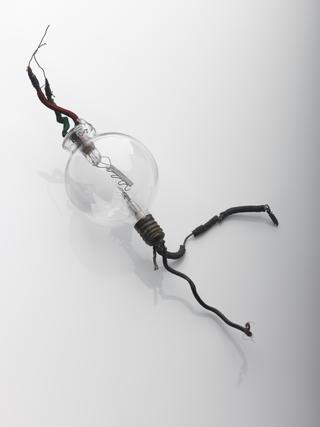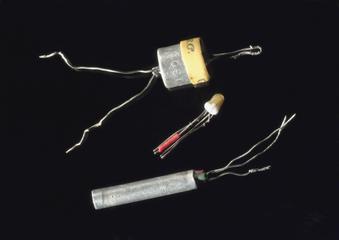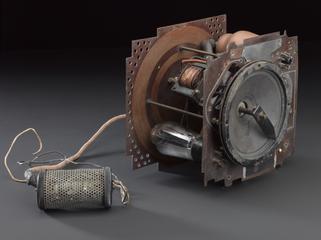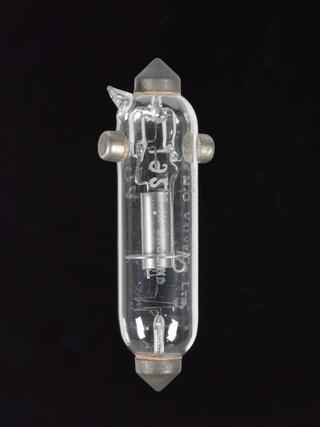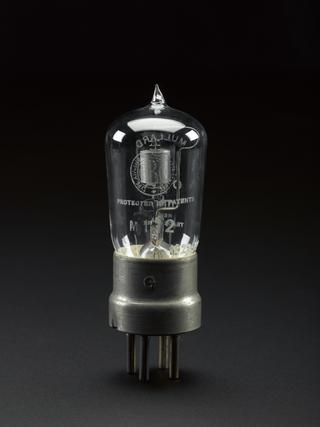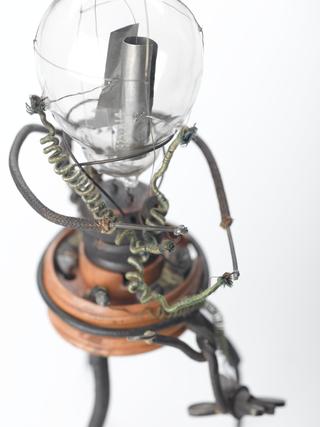
High power water cooled transmitting valve, 1919-1925
- maker:
- M-O Valve Company Limited








High power water cooled transmitting valve, made by the M. O. Valve Company, England, 1919-1925. One of the earliest cooled-anode transmitting valves made in England, of the type used at Daventry broadcasting station 5XX.
Valves like these were used at the Daventry transmitter, the BBC's first long wave radio station, from 1925. Water cooled valves were developed by the General Electric Company to prevent loss of current through the anode (the electrical conductor that allows current to flow through the valve)
Details
- Category:
- Electronic Components
- Object Number:
- 1925-277
- Materials:
- copper (alloy), glass and mica
- Measurements:
-
overall: 550 mm x 200 mm x 100 mm, 1.68 kg
- type:
- thermionic valve
- credit:
- Donated by the M. O. Valve Company
